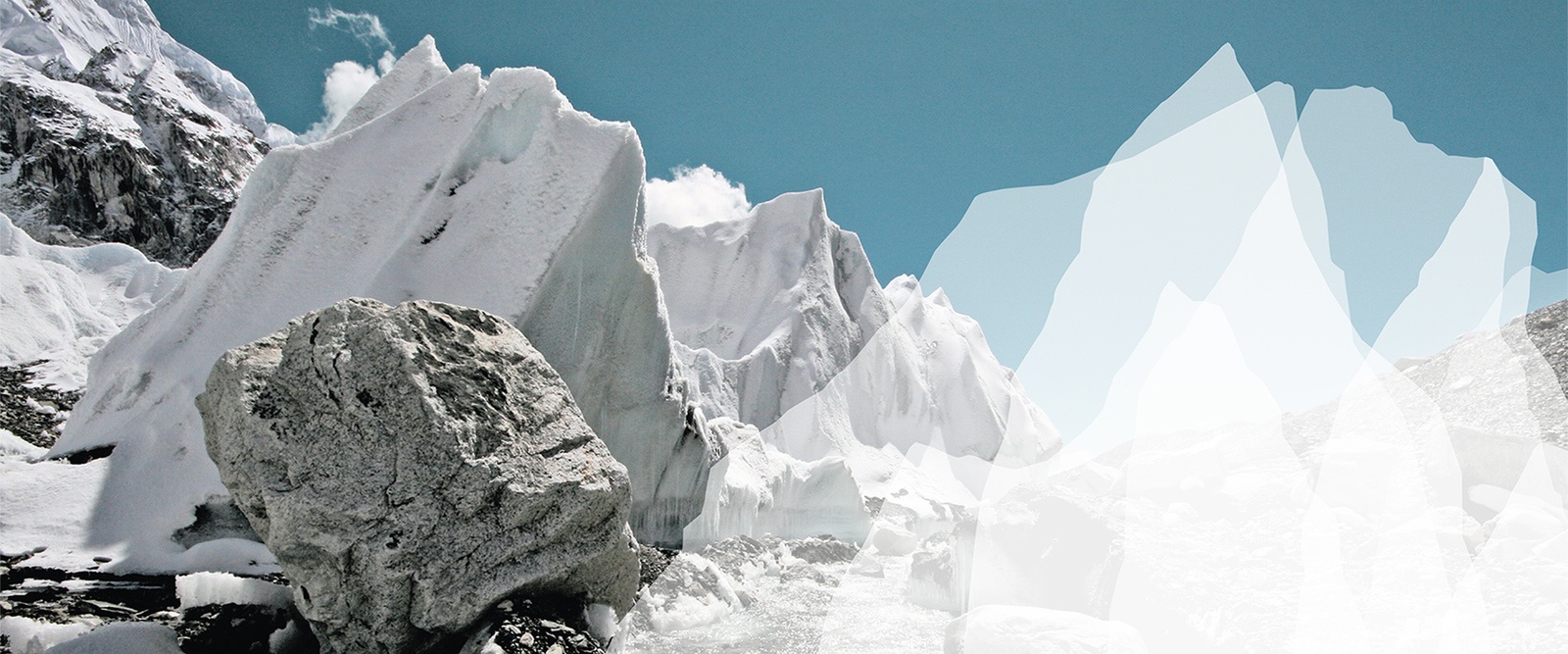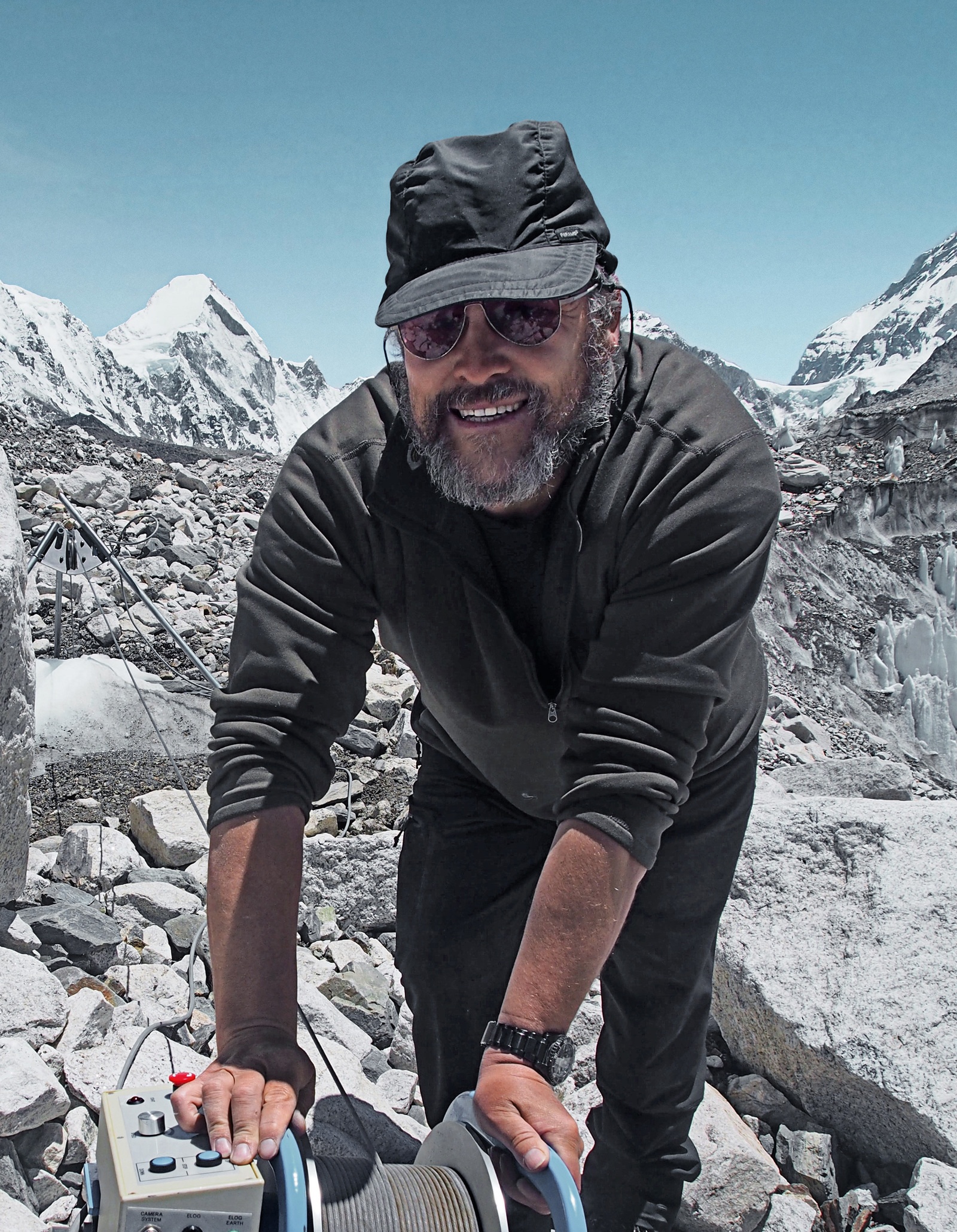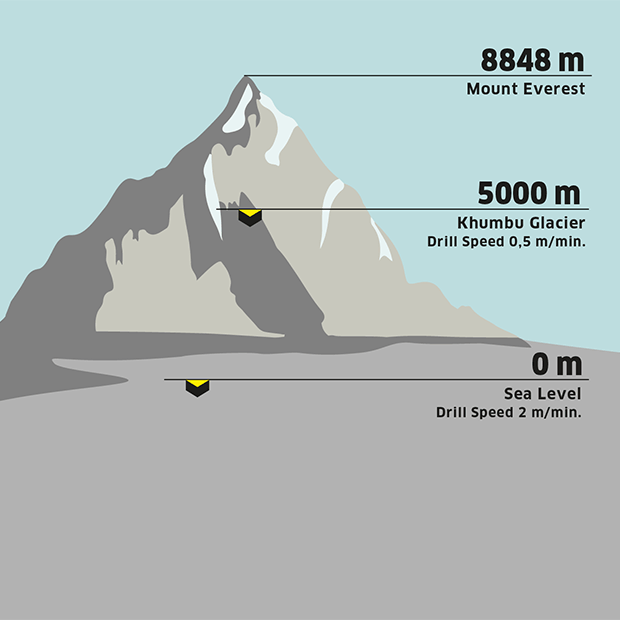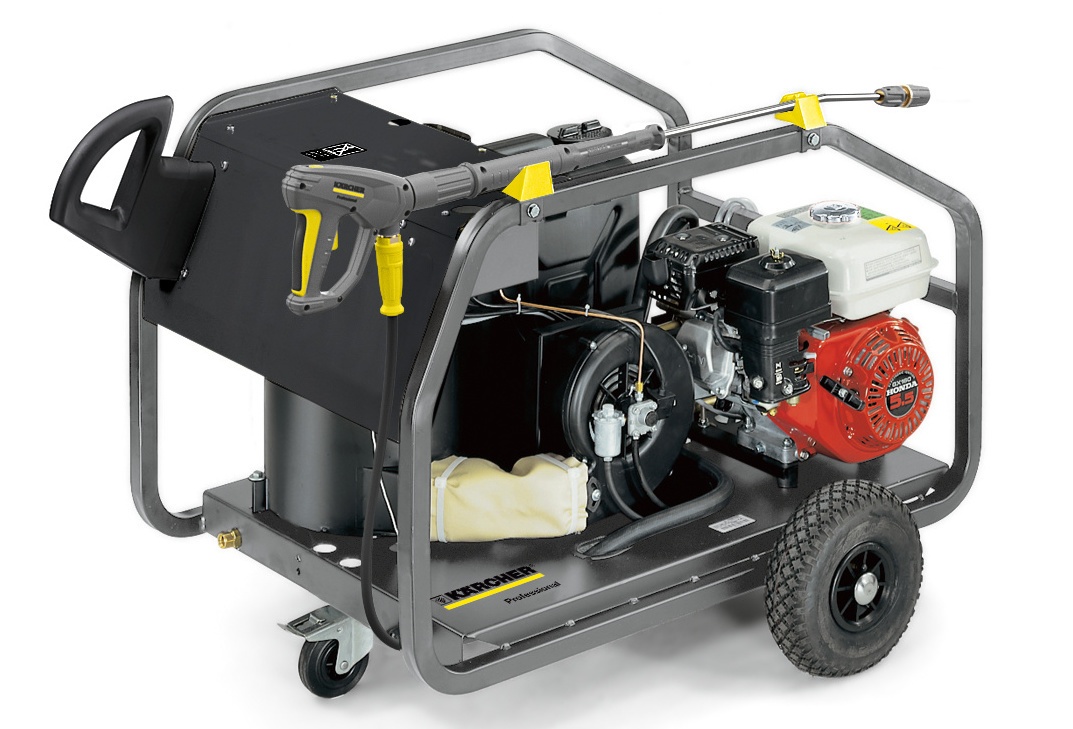Using a power washer as an ice drill
After the Antarctic and the Arctic, the glaciers in the high mountains of Asia are the third largest store of fresh water on the planet. Their meltwater fills the continent’s major rivers and supplies drinking water for billions of people. Due to their high altitude, these areas are particularly affected by climate change. The consequences for the region are fatal, with the threat of avalanches, floods and, in the long term, a significant shortage of water. Geologists use high-pressure cleaners as drills to penetrate deep layers of ice.


Interview with Professor Bryn Hubbard
The glaciologist Professor Bryn Hubbard has been drilling holes into glaciers for 25 years to examine the internal 'anatomy' of the ice. For this purpose, he uses a Kärcher hot water high-pressure cleaner. He and his team have already drilled into the ice down to a depth of 650 metres. difference was keen to find out more.
Professor Hubbard, during the Everdrill-Project you drilled at an altitude up to 5,000 meters. Did you reach your expedition goals?
Yes, we almost reached our stated goals of the project and probably exceeded our own anticipated goals for this first fieldwork season. We managed to drill boreholes to depths of several tens of metres at three sites along the length of Khumbu Glacier. These were all instrumented and data continues to be collected from them, including information relating to internal temperature, internal motion, and water pressure. At the same time we are investigating the surface motion of the glacier and its larger-scale hydrology.
With many challenges, including high altitude, how did you manage to get all your equipment onto the glacier?
Through the amazing work of local porters and skilled helicopter pilots, we managed to get our equipment onto the glacier and successfully relocated between sites. This, in itself, was quite a logistical achievement considering the extremely difficult terrain and that the maximum helicopter payload is less than 200 kg at this elevation.


Could you explain how the drilling process works?
The drilling process is very simple: we draw water from surface streams and ponds into a settling tank. Water is fed from the settling tank to the hot water high-pressure cleaner, where it is heated and pressurised. That water is then fed along high-pressure thermoplastic hose to a ~2 m long steel or brass tube that we call the “drill stem”. On the end of the drill stem, we attach a nozzle holder and the solid pencil jet nozzle that forces the water through a circular orifice of about 1 mm diameter. This high-pressure hot water jet melts the ice as the stem is lowered slowly down the borehole into the glacier. In theory, the stem never touches the ice, allowing it to hang as a pendulum and thereby drill vertically. In practice, particularly when debris gets into the hole, this may not be achieved. Drilling by hot water can advance at rates of >2 m per minute, but with surface and englacial debris, and compromised combustion at high elevation, progress was slow – no faster than 0.5 m per minute – on Khumbu Glacier. However, progress of 0.5 m per minute is infinitely better than no progress at all and we have plenty of time.
Throughout this project you carried out many physical tasks, plus dealt with weeks of altitude and coldness; were there particular things you did to make your time a little more comfortable?
The support staff and porters were super company, as well as being amazingly accommodating and effective. The scenery is awe-inspiring and never ceases to amaze. Internet is available in lodges right up to Everest base camp, which allowed us frequent contact with the outside world. However, it has to be said that Duncan’s jokes didn’t really help.
What did you personally like the most on your last expedition to Khumbu Glacier?
Since I have drilled boreholes in many glaciers in some fairly amazing environments, I would have to say that it was probably the overall experience: flying into and spending a couple of days in Kathmandu, flying internally to Luckla airport (with its runway sloping straight off the mountainside), trekking to Everest base camp and then working, and finally doing it all again on the way down. With the fieldwork having been successful, this was an extremely enriching and rewarding overall experience.
What's next for EverDrill? Could you give us an insight into your upcoming projects?
Season 2 of EverDrill is set to start in April 2018, when we will be refining our drilling and borehole experiments based on results from Season 1. We also hope to work in the very near future with Kärcher engineers to develop and test a hot water drill system to operate at even higher elevations, eventually allowing us to reconstruct spatial variations in snow accumulation widely across the Himalayas. Elsewhere, later in 2018, I plan to link five Kärcher HDS 1000 DE pressure washer units in parallel to supply sufficient hot water to drill boreholes to a depth of 1.3 km to access the ice-bed interface of Store Glacier in central-west Greenland.
For more information on the Everdrill project, please visit the project team's website at everdrill.org.

HDS 801 B
The hot water high-pressure cleaner chosen was the Kärcher HDS 801 B as it was small and light enough to be transported by helicopter to the drilling site.
Maximum independence
- Efficient four-stroke petrol or diesel engine with reversing starter.
- The right motor for the right job.
- Suitable for stand-alone use, independent of power supply.
For the toughest jobs
- Sturdy tubular steel frame protects all components. Sturdy tubular steel frame protects all components.
- Crane hook for use in the rental business and in construction, agriculture and forestry.


